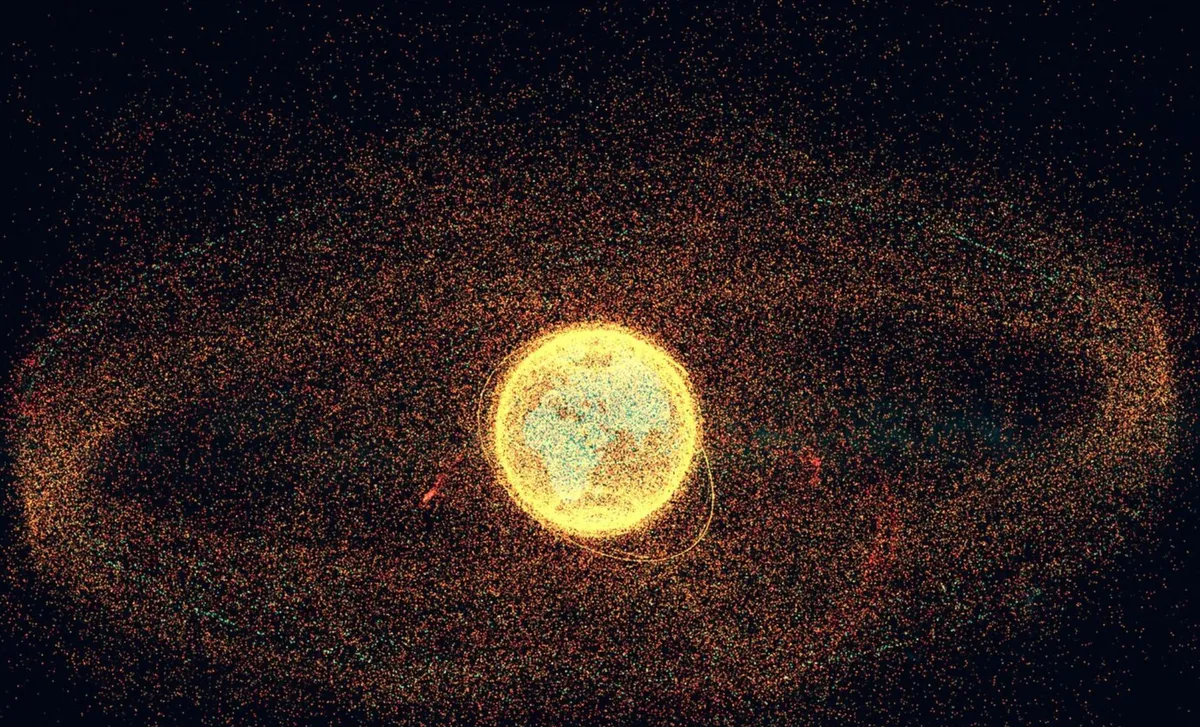
A new short film from the European Space Agency (ESA) has reignited the debate surrounding the escalating hazards posed by space debris. Titled Space Debris: Is It a Crisis?, this impactful documentary premiered on April 1, 2025, during the 9th European Conference on Space Debris. It confronts a growing concern within the aerospace industry: Earth’s orbital environment is approaching a critical tipping point.
As humanity’s reliance on space-based infrastructure intensifies, the complexity and congestion of orbital traffic have also surged. Currently, there are over 8,000 operational satellites orbiting Earth, primarily located in low Earth orbit (LEO), which ranges between 160 and 2,000 kilometers above the Earth's surface. These satellites are essential for delivering vital services, including GPS, weather monitoring, telecommunications, Earth observation, and defense intelligence.
However, LEO has become increasingly congested, largely due to the dramatic rise in commercial satellite constellations launched by companies like SpaceX, Amazon (through Project Kuiper), and OneWeb. Each launch adds dozens or even hundreds of satellites to already crowded orbital zones. As of early 2025, more than 30,000 tracked pieces of space debris have been cataloged by ground-based radar and optical tracking systems. Estimates indicate that over one million fragments larger than 1 centimeter are currently orbiting Earth, each capable of disabling a satellite on impact due to their high velocities, often exceeding 25,000 kilometers per hour.
The situation is cumulative: as more collisions occur, they generate even more debris, increasing the likelihood of further collisions in a runaway scenario known as Kessler Syndrome. ESA’s film frames this feedback loop as one of the most significant emerging threats to orbital safety.
ESA’s documentary emphasizes that space debris is not merely a theoretical concern for future generations; it is complicating operations today. On average, the International Space Station (ISS) performs multiple collision avoidance maneuvers each year to evade high-risk debris. Similarly, Earth observation and communications satellites now require frequent trajectory adjustments, consuming limited fuel and shortening mission lifespans.
For instance, a catastrophic collision in 2009 between an inactive Russian Kosmos-2251 satellite and the operational U.S. Iridium 33 resulted in more than 2,000 trackable fragments. Additionally, a Russian anti-satellite test (ASAT) in 2021 added another 1,500 pieces of debris to an already crowded orbital shell, provoking widespread condemnation and highlighting the geopolitical dimensions of debris creation.
ESA warns that such incidents are becoming increasingly challenging to manage. Even well-planned missions now face heightened risks during launch and orbital deployment due to uncertain debris trajectories. The longer corrective measures are postponed, the greater the chance that heavily utilized orbital bands could become functionally unusable within decades.
While much of the space debris eventually re-enters Earth’s atmosphere and disintegrates, not all of it burns up completely. Larger fragments or those made from heat-resistant materials can survive re-entry and reach Earth’s surface. Most of these remnants fall into oceans, but some do land on land. There have already been several recorded incidents; for example, in 2022, a piece of a Chinese Long March 5B rocket crashed in Southeast Asia, and in 2024, a component of a SpaceX Starlink satellite landed in a rural area of Australia. Although no injuries occurred, these events underscore the unpredictable nature of uncontrolled re-entries.
ESA notes that the environmental impact of metallic and composite debris falling into the ocean is still not fully understood. Concerns range from chemical contamination to hazards for marine ecosystems, especially as more rocket stages and satellites are deorbited without controlled disposal procedures.
ESA’s film emphasizes that the solution to the space debris crisis cannot come from a single agency or country alone. It calls for a global commitment to sustainable orbital practices, starting with design-for-disposal guidelines to ensure that satellites can safely deorbit at the end of their missions. These measures include passivation to prevent onboard explosions, controlled deorbiting mechanisms, and minimizing fragmentation risk.
Several initiatives are already underway. ESA’s ClearSpace-1 mission, set to launch in 2026, aims to demonstrate active debris removal by capturing and deorbiting a defunct payload adapter. Moreover, companies like Astroscale and Northrop Grumman are developing commercial servicing and cleanup technologies to help manage orbital debris.
However, the documentary frames these efforts as necessary but insufficient on their own. Without binding international regulations and broad industry adoption, the pace of debris creation is likely to outstrip cleanup efforts. ESA recommends that debris mitigation become a prerequisite for launch licensing and space traffic management in the years ahead.